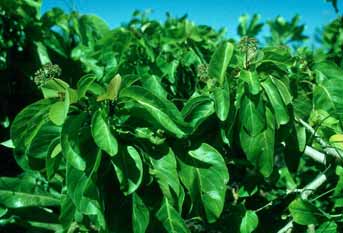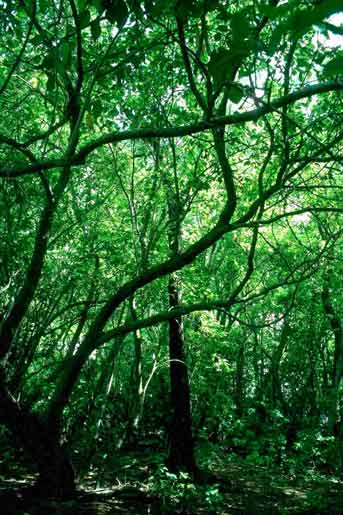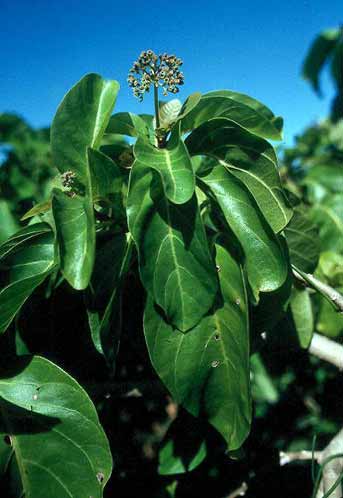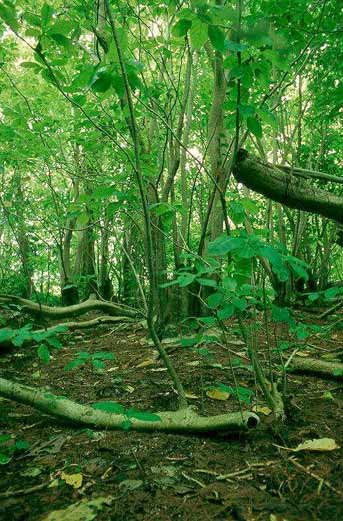 Distribution: Kañal is widely distributed throughout most of the major island chains of Indian and Pacific Oceans but not in Hawai'i. In areas undisturbed by humans, it is often the dominant tree in coastal forests, most commonly on sandy shores. In earlier times this tree was probably much more common in the Marshall Islands than it is at present. Attached to the feathers of seabirds, the sticky seeds are spread over long distances. The branches of the light wooded tree often break off and may then form new roots in the ground. It can form many pure-stand forests, with very little or no undergrowth. This tree frequently serves as a roosting and nesting site for many species of seabirds, and the guano from these birds is an important source of fertilizer for atoll soils. Distribution: Kañal is widely distributed throughout most of the major island chains of Indian and Pacific Oceans but not in Hawai'i. In areas undisturbed by humans, it is often the dominant tree in coastal forests, most commonly on sandy shores. In earlier times this tree was probably much more common in the Marshall Islands than it is at present. Attached to the feathers of seabirds, the sticky seeds are spread over long distances. The branches of the light wooded tree often break off and may then form new roots in the ground. It can form many pure-stand forests, with very little or no undergrowth. This tree frequently serves as a roosting and nesting site for many species of seabirds, and the guano from these birds is an important source of fertilizer for atoll soils.

|
Description: This native tree can develop huge trunks and grow to heights of 20 m (65 ft) or more. The leaves are of variable shape, usually 7-25 cm (3-12 in) long. It produces many flowers in clusters, and the fruits are narrow, cylindrical, 15-25 mm (.5-1 in) in length, and sticky.

Uses: The wood of kañal is quite soft and weak, and therefore it is rarely used for building. Although its wood is light, kañal branches are sometimes used for firewood. The leaves and bark of this tree are used for baby medicine, as a purgative, and to treat headaches, open wounds, and diarrhea. A drink made from 3 green and 3 yellow leaves of kañal mixed with fresh water is used to help relieve the pain suffered from falling out of a tree.

|

